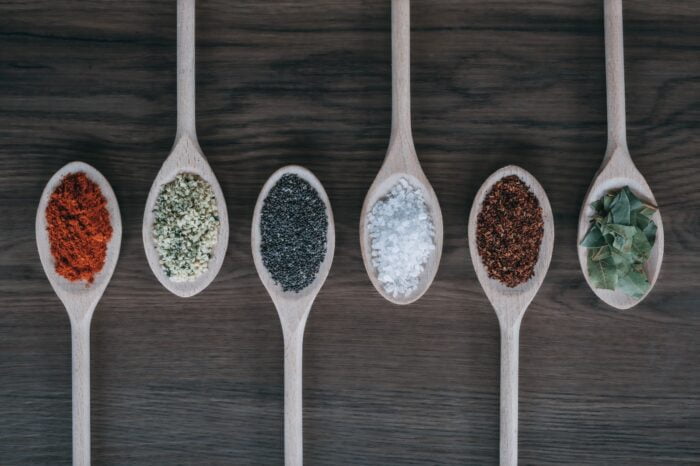We need sodium, but far too many people are consuming too much
I’m not a real big fan of salt.
Small amounts are significant, but I can tell straight away if something I’ve eaten has too much salt for my liking.
Part of my meal prep strategy is knowing how many herbs and spices to add, plus the right amount of salt for flavour — without overpowering the food.
If you buy a lot of pre-packaged meals from supermarkets or speciality stores, you will be subject to a lot of added ingredients you may not want — including both salt and sugar.
That’s why reading all labels correctly and then making a conscious and informed decision as to whether you want to eat it or not is very important for your health.
My mother suffered from hypertension for many years.
She never really added salt to our diet — and it was only when I moved out of the family home that I started to add salt to my foods.
Now, I still don’t like to add lots of salt — as it has been conditioned for many years.
Kidney disease runs on my mum’s side, and therefore I am super vigilant about how salt may affect my health later on in life.
When my mother passed away, she experienced renal failure — and for many months, we aimed to reduce her salt and protein intake to help her life a bit more comfortably.
It’s something to keep in mind should you have an underlying health issue — or a potential to develop one as you age.
A lot more than 90 per cent of Americans consume far too much sodium.
This leads to hypertension and high blood pressure and increases your chances of developing heart disease and stroke risk.
We only need about 450 milligrams of sodium per day, and the recommended amount is 2,300mg or 1,500mg for those at risk of hypertension.
What’s quite scary is that the average sodium consumption is about 3,000 to 3,500 mg per day — which is about 50 to 100 per cent above the upper limit.
Usually, these foods are found in cured meats, bread, cheese, soups, pre-made foods, and desserts.
Research has identified five main strategies of salt reducing technologies that might help companies become more informed on how to use different salt modification methods.
For instance, one method could be reducing or eliminating salt from the recipe.
However, the total elimination of salt may not be viable — since salt is needed for the dough to rise and for meat preservation.
Salt replacers such as potassium chloride, calcium chloride or other chloride and acid salts may be ideal, but they do produce a bitter taste — and will need to be mixed with bitter blockers.
Encapsulating salt crystals changes how it is dissolved in the mouth — or the use of celery powder to preserve cured meats — rather than sodium nitrate.
How to reduce salt without much fuss
In theory, these modifications may be a challenge for food manufacturers; we can take matters into our own hands with a few simple processes.
Wean yourself off salt slowly: This study mentions how important it is to lower your salt intake by perhaps going through a salt diet.
This requires the limitation of processed foods and slowly reducing your information — as you would with sugar.
Cook your meals: Cooking food from home is another fantastic option, which will allow you to add or eliminate the amount of salt you put in food.
Salt in cooked food may reduce its effectiveness and increase our risk of adding more salt than we should.
Buy low sodium varieties: Sometimes, we need to pre-buy our food due to time restrictions.
If this is the case, look for common sodium varieties of foods or ingredients.
For example, I like to use a low sodium variety of tomato paste, as I add that to many of our meals regularly.
However, it contains a high level of salt, which can alter the taste of the accompanying ingredients. Try that for all sauces and condiments (such as soy sauce).
Use Himalayan salt; According to WebMD, This variation is not only better for you but contains less salt than the ordinary table variety.
It’s also more flavoursome, with trace amounts of minerals (compared to table salt).
Just try to go for the most natural source possible, as they may contain some toxic elements.
Use herbs and spices more often: I love using fresh and dry herbs often — as that sometimes can eliminate the need to use salt.
Just make sure the herbs are sodium-free — because many manufacturers may hide them through other secret ingredient numbers.
Fresh is best: That includes protein sources and veggies.
Canned and frozen varieties run the risk of containing added salt.
One keynote to be aware of is that most of us probably do not have enough salt.
The best way to find out if your salt intake is adequate — see your doctor, get a blood test and asses from there.
If you practice intermittent fasting, your salt levels may plummet — so you might have to keep tabs on that and add more.
The symptoms are very similar to hyperglycaemia.
I usually fix my symptoms with hydration fluid or a pinch of Himalayan salt in water and drink that.
If you would like to read more articles like this or start writing your own, please sign up via my link. I’d love to see you on the other side. ????????
Sign up here for your medium subscription.
I get a portion of your monthly fee at no extra cost to you, and it will go a long way in supporting me as a writer.
